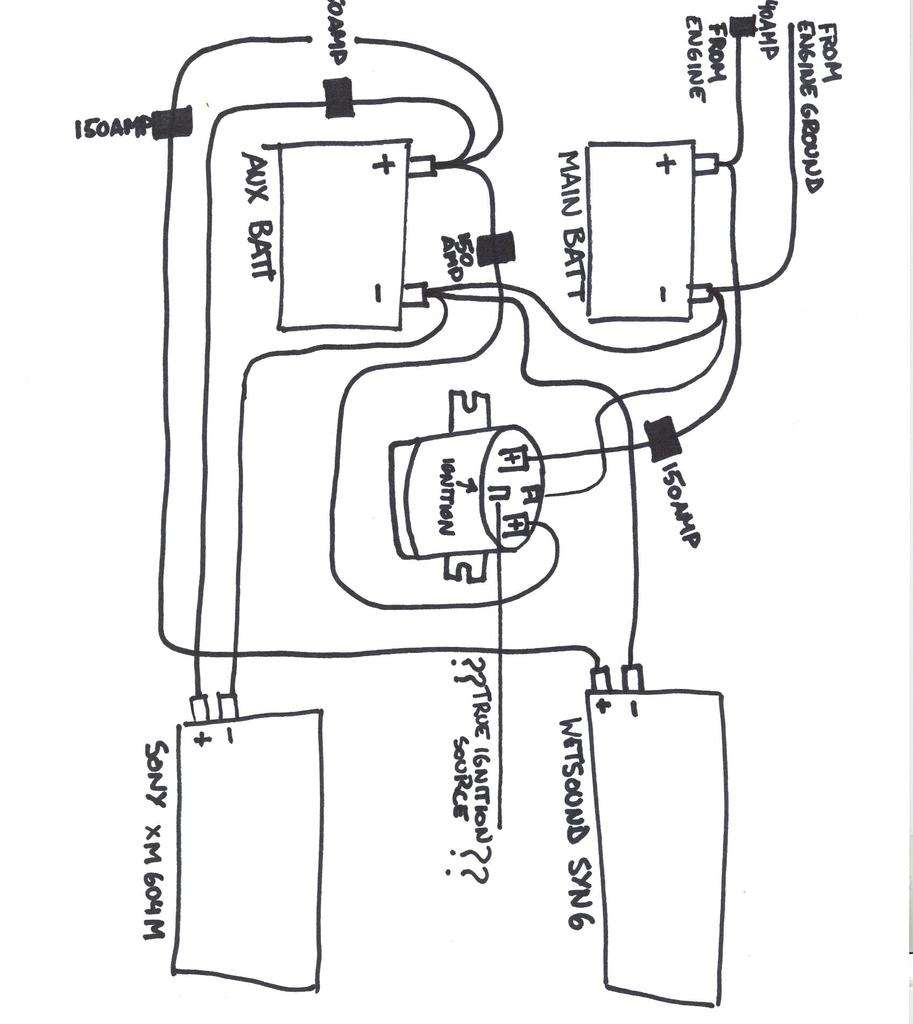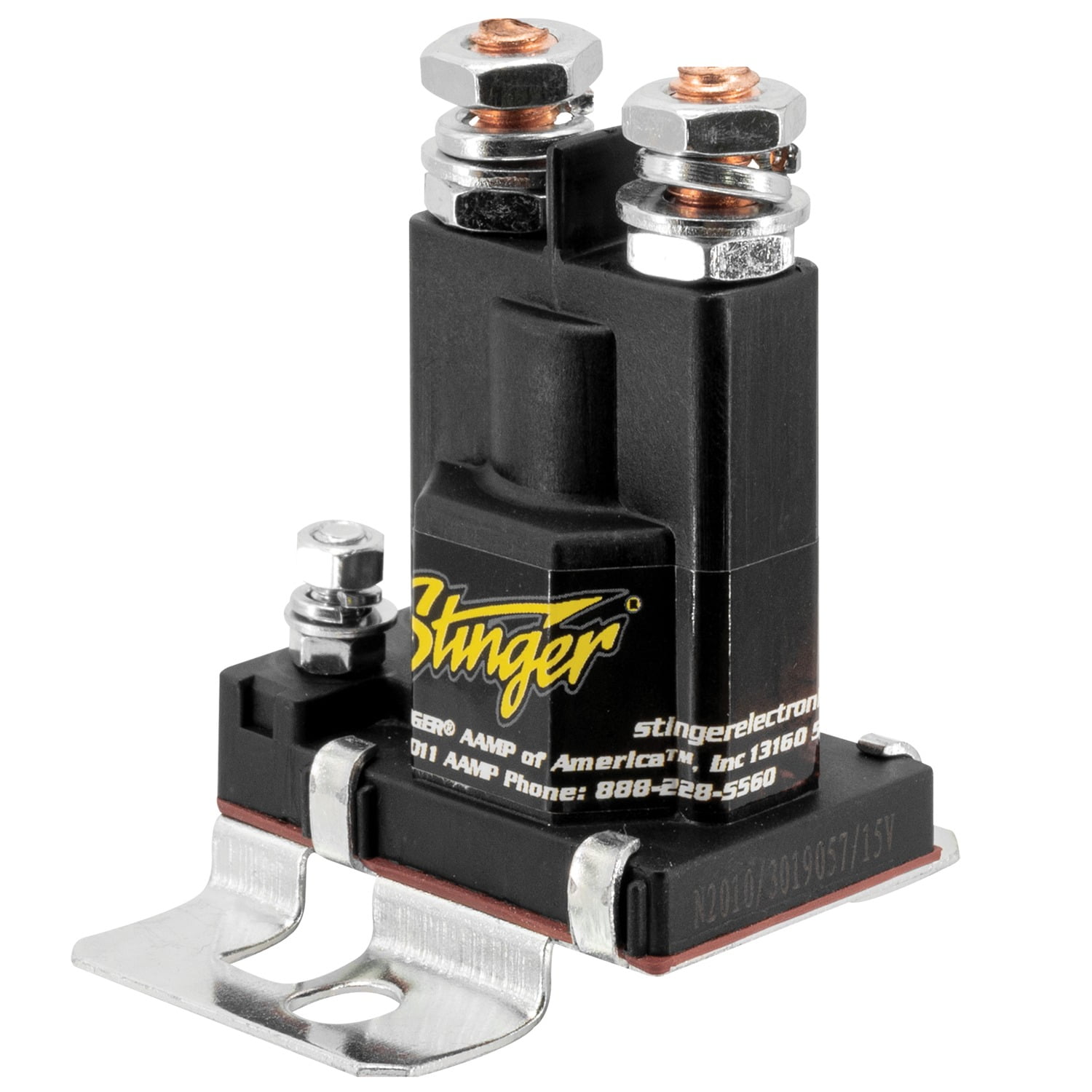

- #500AMP STINGER BATTERY ISOLATOR RELAY NOT CHARGING BATTERY HOW TO#
- #500AMP STINGER BATTERY ISOLATOR RELAY NOT CHARGING BATTERY INSTALL#
- #500AMP STINGER BATTERY ISOLATOR RELAY NOT CHARGING BATTERY UPGRADE#
- #500AMP STINGER BATTERY ISOLATOR RELAY NOT CHARGING BATTERY PLUS#
For the isolator/relay, what amperage do I need.
#500AMP STINGER BATTERY ISOLATOR RELAY NOT CHARGING BATTERY HOW TO#
I also understand that I need a 12ga wire from the isolator to a fuse that is key on and that I need to put fuses between the two batteries and the isolator.ġ) Based on my needs above I am not sure how to size my components. I understand that I need to run heavy duty wire from the starter battery hot to the isolator, from the isolator to the house battery hot and between the two negative terminals. I tried to read all 100 pages, but got lost in some of the details so I am looking for some specific help.
#500AMP STINGER BATTERY ISOLATOR RELAY NOT CHARGING BATTERY INSTALL#
My plan was to do a KISS install ala the How to make a cheap isolated dual-battery setup for $50 thread. I would also like the ability to jump start off the second battery as a backup to the primary. Additional power needs at this time are pretty minimal 12v charging of electronics, lights, inverter for blanket (unless we get a 12v one) and laptop, maybe a fridge down the road. Looking to augment our sleeping bags with an electric blanket for really cold nights. Went to eastern Washington last weekend and it was COLD at night. The downside to the DDC50 is it is 12V only (no 24V house battery), is not really configurable and has very a low solar panel input voltage limit (25V).My son and I are sleeping in the back of our (new to us) 2004 Suburban on our outings. The provides both alternator and solar charging of the house battery and will also divert solar power to charge the starter battery if needed. I would replace the isolator with the DC-DC converter since otherwise you will get unnecessary power drop in the isolator.Īn alternative if you will have solar power is to use a Renogy DDC50.
#500AMP STINGER BATTERY ISOLATOR RELAY NOT CHARGING BATTERY PLUS#
The Orion will not however change your starter battery from the house battery.įar as I can see the DC-DC converter plus a set of jumper cables (in the event you need to jump start the engine from the house battery) will do everything you need.

Nor will it prevent your house battery from cooking the alternator if the house batteries are at too low of a SOC when you try to charge them from the alternator.Ī DC-DC charger (like an Victron Orion TR) will provide both charge management for your new lithium batteries and will also protect against draining the starter battery with house loads. What the isolate will not do is protect your LiFePo4 house battery from being overcharged by the alternator. Voltage Sensitive Relay (VSR) isolators behave as HRTKD describe - they only pass current to the house battery when the starter battery is fully charged, but I doubt that’s what you have now given the age of your RV.Ĭlick to expand.The isolator is there so that running the house loads in the RV can't drain the starter batteries stranding you in the middle of nowhere. Neither the Renogy nor my stock isolator care about the voltage of the starter battery so I suppose if it’s borderline the additional load of the charger could make starting even harder. As mentioned any “Battery boost” function (we have a switch on our dash) that would use house batteries to start the vehicle if the start battery is dead won’t work. This is exactly what the stock relay isolator in my RV does except that when the Renogy is engaged current can only flow one way. So if the ignition is off no current is drawn from the starter battery.

It takes a positive current from the vehicle ignition switch to start charging. I don’t know what the consequences if any would be if both were used but the Renogy DC-DC charger has isolation built in. Most discussions I have seen talk about either/or not both. I am in the same process and pondering the same question. #2) If I install a DC>DC charger, do I remove the 20 year old battery isolator? Or do I use them both somehow? #1) Do I correctly understand the situation and the role of the DC>DC charger? They advise installing a DC>DC charger, like this one, to regulate current draw from the alternator to the batteries. Some experts believe LiFeP04s can draw so much current when charging that they damage the alternator. Now I am considering upgrading my batteries to LiFePO4, and I understand this system might not cut it anymore. There is an isolator that prevents the house electrical from draining the starter battery.
#500AMP STINGER BATTERY ISOLATOR RELAY NOT CHARGING BATTERY UPGRADE#
So my Covid-19 project is to upgrade it all.Ĭurrently, the alternator charges both the starter and the house batteries. State of the art for the year 2000, that is. I have a Roadtrek Class B motorhome with a state of the art electrical system. I have extensively RTFF and learned a lot. Hi Gang! Newbie here and this is my first post.


 0 kommentar(er)
0 kommentar(er)
